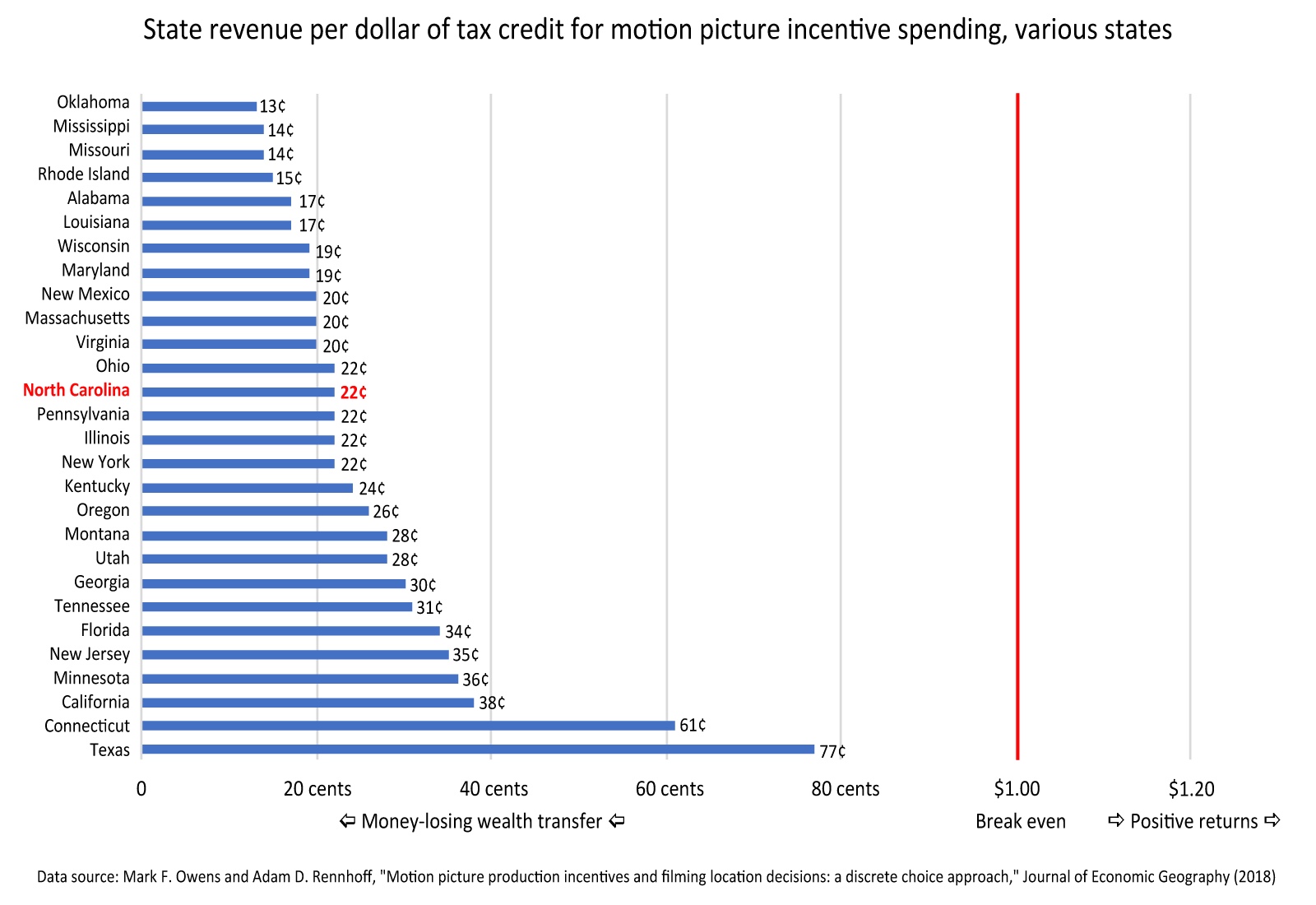Too often the discussion of economic incentives amounts to being pleasantly surprised that dogs like dog food. It shouldn’t be the end of the story that giving free money and tax credits for Industry X draws positive feedback from members of Industry X. What are its effects on consumers, taxpayers, the other industries, etc., from whom resources are taken to give goodies to Industry X?
— Jon Sanders, “Take the Full Measure of State Economic Incentives,” Carolina Journal, 4/23/13
Economist J.C. Bradbury writes in The Atlanta Journal-Constitution today that “Georgia’s film tax credits are big-budget flops.” Here’s an excerpt, with my interjections:
Not only are film tax credits expensive, they do a poor job of promoting economic development.
How can this be? If the government gives money to incentivize economic development, how can that not promote economic development? Bradbury continues:
Tax credits have increased filming in Georgia, which is not surprising: if the state subsidized 30 percent of the cost of manufacturing toilets, Georgia would be the toilet capital of the world.
See? It helps. Doesn’t it? Reading on:
The question is if there are better uses for $860 million, such as education, healthcare, infrastructure, or returning the funds to taxpayers. The answer is a resounding YES.
 This argument is based on the economic concept of opportunity cost. Any use of a resource — money, time, labor, capital — involves the choice not to use it elsewhere. How does the chosen use compare with its best alternative use?
This argument is based on the economic concept of opportunity cost. Any use of a resource — money, time, labor, capital — involves the choice not to use it elsewhere. How does the chosen use compare with its best alternative use?
Where people get off track is that opportunity costs are unseen. We can’t see the benefits from an unchosen alternative. It’s easy to be lulled into thinking they don’t exist and aren’t part of the equation.
This is where people trained in the economic way of thinking can help. Bradbury explains:
Many researchers have studied the economic impact of film incentives and found little evidence of positive returns to this development strategy. For example, a recent study in the Journal of Economic Geography reported that the return on investment to Georgia’s film tax credits was 30 cents on the dollar — a negative return on investment — similar to other states that offer film incentives.
Here is a graph I made from that study’s findings. Pay attention to the horizontal (x) axis:
Takeaway
Just because companies like an incentive targeted for them isn’t enough to say it’s really working to promote “economic development.” The question is whether it actually produces better economic returns than the best alternative uses people would have for that money. Most of the time it doesn’t. It simply can’t.
For more information, see:
- The John Locke Foundation’s Policy Position on NC’s film grants
- Study: State Giveaways to Film Productions Fail to Boost NC’s Economy
- A look at what film incentives can’t do
- Study: Why film incentives don’t work



